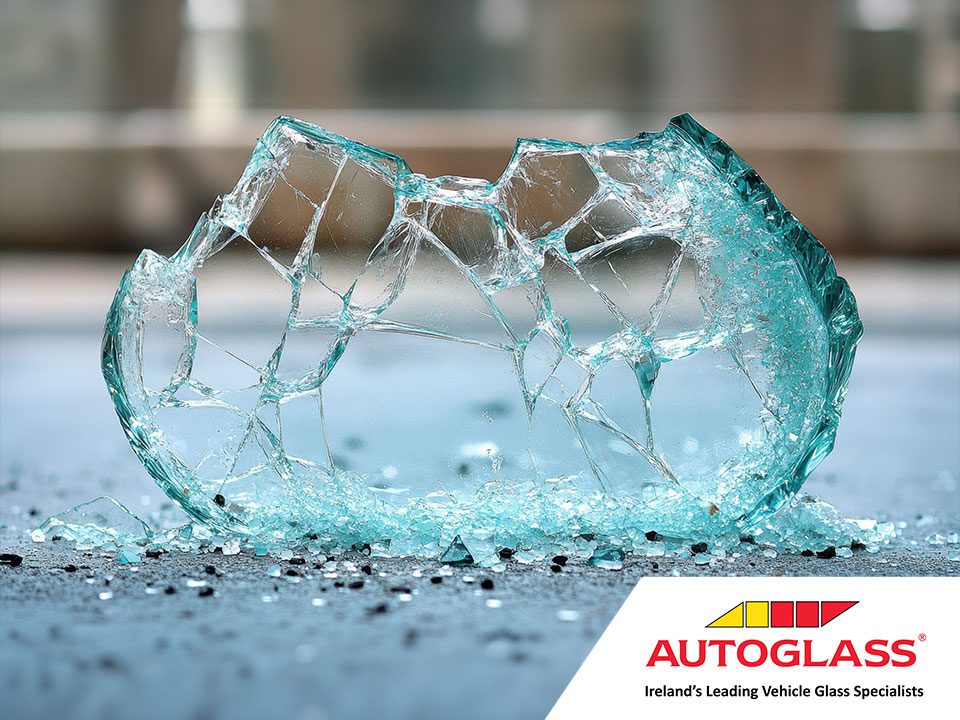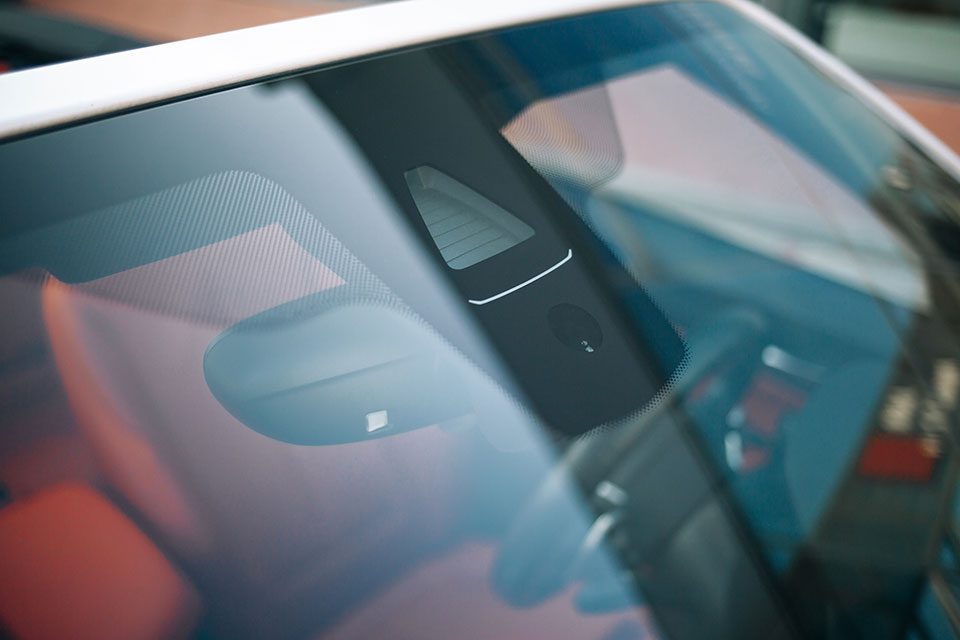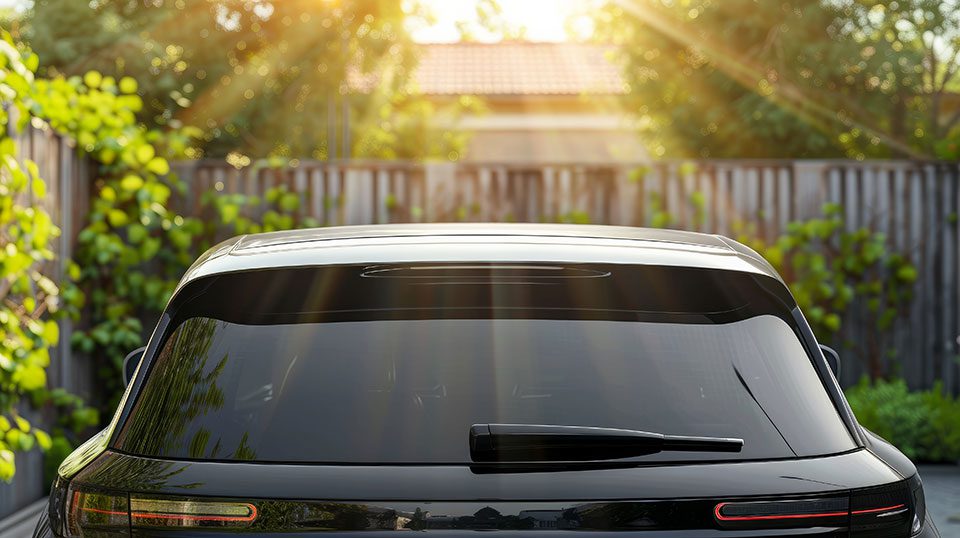
What Makes Modern Car Glass So Safe?
If you’ve ever been unlucky enough to be in a car accident – or even just had a stone ping off your windscreen on the M50 – you’ll know just how crucial your car’s glass is. Modern car glass is a key safety feature, and the technology behind it has come a long way in recent decades.
Car Glass Safety: What’s the difference between modern car glass and ordinary glass?
Let’s get one thing out of the way: car glass is not the same as the glass in your windows at home. If you were to hit a standard pane of household glass with a bit of force, it would shatter into long, dangerous shards. That’s where car glass safety comes in. This is the core reason behind using specialised types of glass in modern vehicles – engineered to either stay in one piece or break into tiny, blunt fragments that reduce the risk of injury. There are two main types used in today’s cars: laminated glass and tempered glass.
How Has Car Glass Evolved Over Time? >>
Laminated Glass: Your windscreen’s secret strength
Unlike traditional windows, your windscreen is made from laminated glass. This type of glass is all about keeping things intact, even under serious stress.
How it’s made:
Laminated glass is essentially a sandwich. It’s made up of two sheets of glass with a layer of clear plastic—usually polyvinyl butyral (PVB)—bonded in the middle. The entire unit is fused using heat and pressure.
What’s special about laminated glass is that if it does break, the pieces stick to the inner plastic layer instead of flying into the cabin or onto the road. Even if a stone causes a chip or a collision causes cracking, the glass generally holds its shape—keeping passengers protected and visibility unimpaired.
Why it matters:
- Prevents ejection: In a crash, laminated glass helps prevent passengers from being thrown from the vehicle.
- Theft deterrent: Much harder to break through quickly.
- Noise reduction: That PVB layer reduces wind and road noise.
How to Break a Car Window in case of Emergency >>
Tempered Glass: Extra safety in your side and rear windows
Unlike your windscreen, your car’s side and rear windows are made from tempered glass, designed with different strengths in mind.
How it’s made:
Tempered glass begins as standard glass but is then rapidly heated to over 600°C and cooled just as quickly. This heat-treatment process causes the outer surface to compress while the interior remains in tension—resulting in glass that’s several times stronger than untreated glass.
Why it matters:
- Safe breakage: When it breaks, tempered glass shatters into tiny cube-like pieces. These are far less likely to cause injury than jagged, razor sharp shards.
- Emergency access: Easy to break from the inside in the event of an emergency.
- Cost-effective: Cheaper to manufacture and replace than laminated glass.
This blend of strength and breakage safety is why tempered glass is the preferred choice for rear and side windows in cars.
Why DIY Windscreen Chip Repair is Riskier Than You Think >>
Shatterproof Glass: Designed to break the right way
One of the most important aspects of modern car glass safety is the use of shatterproof glass. This doesn’t mean it is unbreakable, but rather that it breaks safely.
Shatterproof glass is a general term for both laminated and tempered glass technologies. Laminated glass holds together when cracked, while tempered glass crumbles into small, blunt bits. Both are engineered to minimise injury, maximise visibility, and provide crucial support to the vehicle’s structural integrity during a collision.
Windscreen Repair: Why chips can´t be ignored
You are likely aware of the common causes for a minor windscreen chip – loose grit, potholes etc. The good news is that recent advancements in windscreen repair technology has made it easier than ever to fix minor damage before it spreads.
A chip can often be repaired in under half an hour if caught early, saving you the cost and hassle of a full windscreen replacement. Quick repairs also preserve the integrity of the laminated glass, ensuring that it continues to provide full protection in the event of a more serious collision.
Sometimes, the damage is too severe for a simple fix – like if a crack spreads across your line of sight while driving or reaches toward the edge of the glass. In these cases, a full windscreen replacement is the safest and most reliable solution.
Why a Windscreen Crack Can’t Be Repaired >>
Next time you slide into the driver’s seat, take a second to appreciate just how advanced your modern car glass really is. It’s not just there for the view—it’s a meticulously engineered piece of safety technology designed to protect you and your passengers on every journey.
So there you have it, from the laminated glass in your windscreen to the tempered, shatterproof glass in your side and rear windows, every pane of car glass is working quietly in the background to keep you safe, secure, and on the road.
We hope you found this deep dive into car glass safety illuminating. Check back with the Autoglass® Blog soon for more motoring guides, safety tips and explainers just like this. Safe travels!
Book an appointment now
For a quick and easy way to make an appointment book online now.


